Cuba’s First Black Model
Yusimi Rodriguez, photos Irina Echarry
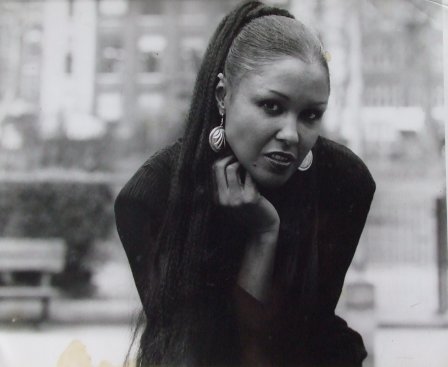
HAVANA TIMES, April 14 – A friend told me about her more than three months ago. “She was the first black model in Cuba,” she explained, and over that entire period I kept pestering her so she’d help me get in touch with the woman. She was referring to Luz Maria Collazo Reyes, and after the first five minutes of talking with her, I realized that her achievements went a great deal further than having been the first black woman of our runways. But let’s start from the beginning:
How did you get into world of fashion?
“I don’t remember if it was Korda or Rafael de León who let me know they were looking for a model in the Salón de Embajadores of the Hotel Havana Libre. All the models from the upscale pre-revolutionary El Encanto department store were there: Norka Mendez, Adelfa… but there was not a single black woman. I received my first lessons from Norma Martinez just two hours before going out onto the catwalk. I was only 21.”
This happened in 1964. “It was a time when they were trying to integrate blacks into the Revolution and into all spheres of culture. Before that everything was separate: parks, clubs, beaches… There had even been divisions between blacks and mulattos. Cuba was possibly the most racist country in Latin America,” she told me.
Yet Luz Maria recalls other important events in her life that year: “I danced in the role of Eurídice in Orfeo Antillano, by Ramiro Guerra; I was a soloist in the play Octeto Amoroso, which was choreographed by Manuel Iran…”
Luz Maria Collazo Reyes was also a soloist with the Conjunto Nacional de Danza Moderna (now the Danza Contemporánea de Cuba company), founded by Ramiro Guerra in 1959.
So what you really wanted to be was a dancer?
“What I wanted was to be an actress. I went to the Teatro Nacional to try and study dramatic art, but they were already closed.”
Someone told her about tryouts to study dance, so she returned the next day for an audition.
“That was a time when there were few trained dancers, so Ramiro Guerra searched for them in the street, among ordinary people.”
In 1961, after months of effort in the company’s night school, Luz Maria debuted in “Suite Yoruba, one of Guerra’s most famous choreographies and a winner of international awards. Today it is no longer in the company’s repertoire.
“But in 1964 I was also on my first cover. The magazine was Soviet Cinema…”
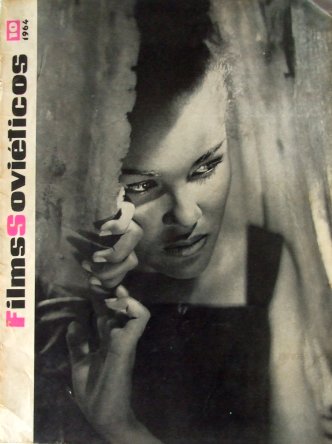
So it turned out that I was seated in front of the face featured on posters for the first Cuban-Soviet co-production: the movie “Soy Cuba,” directed by Mikhail Kalatozov. This movie was included among the ten best films in the history of cinema thanks to US directors Francis Ford Coppola and Martin Scorsese, who discovered it in the United States after decades of being shelved. They were impressed by the photography of Urusheski. Luz Maria was the lead role in the first story in this movie.
How did you get that role?
“Well, by chance. It was in the 1962 or ‘63. I had gone to the Havana Libre Hotel to get my hair oiled. I was talking to someone in the restaurant —with the treatment still on— when a woman came up to me with a translator and asked me if I wanted to be in a movie. I told her yes, of course. The woman was the wife of Urusheski, the photographer.”
Before the end of the 1960s, Luz Maria was a soloist in several choreographies by Ramiro Guerra and by other company choreographers. She also participated in her first international tour of five socialist countries and appeared on the front and back covers of the magazine “Cuba.” In that periodical, in the section “La Ninfa Constante,” they reported on her as being a dancer. The photos were by Chino Lope, who photographed her dressed all in white, like someone going through the santeria initiation of Yabo.
“The theme of religion was taboo in those days, and after the magazine came out, the Ministry of Culture called me asking if I were a practitioner of the santería religion and questioning why they had photographed me like that.”
At that time Luz Maria didn’t have an answer, she didn’t practice any religion. In fact, it was only a short time ago that she ran into that same photographer again, who she hadn’t seen in many years. He explained to her that he had photographed her like that as a way of paying homage to his grandmother, who had indeed practiced the Yoruba religion.
In 1967 she was invited to Moscow’s 5th Festival of Cinema and subsequently traveled to Montreal, Canada, for Expo ‘67. “It was the first Cuban exhibition outside the country. There they received me with a great deal admiration and I even modeled clothes by designers from other countries.”
In 1970 she was a dance teacher at the National Theater’s night school and began working as a fashion model in exhibitions for the Ministry of Light Industry. However, the following year there occurred one of the most important moments in her life like dancer. The company put on “Súlkary,” with a dance routine by Eduardo Rivero, which would become one of the classics of Danza Contemporánea de Cuba.

“I entered the hall in which there would be two casts. But once inside, choreographer Eduardo Rivero said he wanted only one, so I ended up observing from a corner, and from there I memorized the whole dance routine. A week before the premiere, one of the dancers got sick and I had to substitute for her. The night of the premiere in the Grand Theater, I was really on edge, but I premiered for the first time and because of that it marked my life. The last time I danced that choreograph was in Kingston, Jamaica, in 1994.”
At that time, Luz Maria was then 50 years old. The company no longer dances that piece.
It caught my attention that during this whole time you alternated your work as a model and a dancer. Didn’t that create conflicts?
“Lots. Ramiro was always getting upset with me. He argued with me because I was going out to work with the photographers and fashion designers. At the Prague Expo I left without his permission. He asked me why I wanted to dance if I was so beautiful. One of the directors of “Soy Cuba” told me he didn’t understand why they’d chosen me if I wasn’t an actress. But now we’re great friends and I feel I owe him a lot. He encouraged us to go to exhibitions, the cinema, to read…”
Which of the two professions did you prefer?
Luz Maria responded to me without having to think, and also with a certain degree of nostalgia: “Dancing. It always interested me a lot.”
I’ve also observed that in a couple of pictures of your movements on the runway, these were sometimes more characteristic of dance.
“Yes. Those must have been photos from Expo ‘67. The artisans of the Fondo de Bienes Culturales liked us moving in a more artistic manner… that we perform elements of dance, techniques that came from classical modeling. However, in most professional runways —in Havana’s La Maison, for example— such things were criticized by the fashion designers. The truth is that I always felt a little like a dancer-model or a model-dancer.”
Another choreographic routine that Luz Maria remembers with great affection from her career as a dancer was “Dúo a Lam” —a tribute to Cuban painter Wifredo Lam— which she danced along with its own choreographer, Eduardo Rivero. When he saw it he was moved; he had never created a dance inspired by Lam’s work. In Luz Maria’s house is a drawing of her profile by the painter. “He said I reminded him of his childhood.” Nevertheless, that work is not presently in the company’s repertoire either.
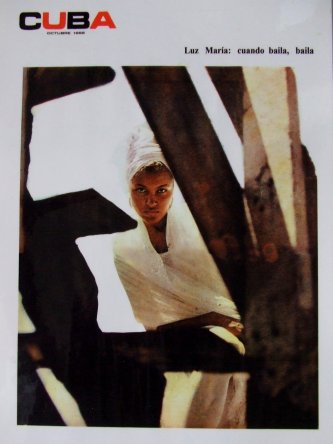
In 1977, she traveled to several countries with the company and danced in Paris at the International Festival of Dance at the Champs Elysees Theater and in Saint Etienne. At that time the “Le Humanité” newspaper compared her to the turn-of-the-century-dancer Loie Fuller for her performance in “Okantomi,” another piece choreographed by Rivero.
During my second conversation with Luz Maria we were at the entrance of the Bertolt Brecht Theater, after she had just finished working with the El Círculo theater group, where she coaches actors in how to move. “I was an unconditional dancer; I didn’t have great extension or flexibility; I began at 18 with a tough body. What happened was that I worked a lot, I worked to project myself. I’m telling you this so you’ll know that I never thought of myself as great. I was always aware of my limitations.”
She recounted this to me with the greatest humility. Minutes before, someone had greeted her and presented her to other people as the primer ballerina of the Danza Contemporánea de Cuba company. During her career she danced more than thirty works and participated along with the company in several international tours and festivals, including the Havana Ballet Festival. In 1978 she received a certificate for her 17 years of uninterrupted work in the field of culture and in 1979 was awarded recognition from distinguished musician Sergio Vitier and a diploma for being a member of the first dance group born after the Revolution.
Throughout those decades Luz Maria Collazo was also one of the most photographed faces in our country. It was difficult for the photographer and for me to select photos from her file to accompany this interview, since there were so many – and all were gorgeous.
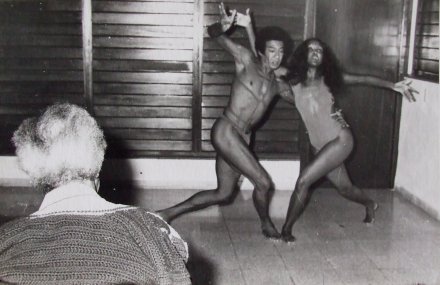
In 1970 she posed for posters and ads for Havana Club rum exports; the company won awards in Rumania. Her image appeared on covers of albums and on magazines such as “Bohemia” and “Mujeres,” where she was photographed by the renowned Osvaldo Salas, the photographer who won an award for pictures of her as the “Novia de Orfeo.” Luz Maria was also a model for acclaimed Cuban photographer Alberto Korda.
In 1980 she was the sole Cuban model in a fashion show of the Socialist Camp (CAME), in Prague, where stylists from East Germany and the Soviet Union requested her services as a model. In 1983 she participated in the International Tourism Fair in Madrid and then traveled to another fair in Paris, where she modeled for various fashion houses, including the Ives Saint Laurent.
In 1992, at the age of 49, she participated in the Annual Padova Fair in Italy, where she modeled the fashions of that country’s designers. But what most moved her was wearing of two wedding gowns, including one specially designed for her with the colors of the Cuban flag. This was because a black model had never before exhibited a wedding gown in Havana’s La Maison fashion house, at least not to her memory or that of any other models interviewed.
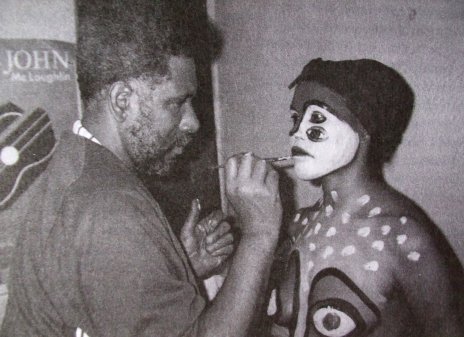
Though the call had gone out from the country’s leadership starting in 1959 for the integration of blacks into all spheres of culture, still by the middle of the 1990s a black woman had never paraded a wedding gown in the most important house of fashion in Cuba.
What do you think of the work of models today?
I believe the models of before were more exalted…they had more class. These aggressive steps they take on the catwalk these days do not excite me.
You’ve also made incursions as a choreographer…
In ‘95 I stopped dancing and became a rehearsal director with Danza Contemporánea. I also gave classes at Cubadanza. I put on my first choreography in 96, titled “Enjambre.” But it only ran three times in the Garcia Lorca Theater and was then shelved; no one ever explained to me why. Nor did I receive much help. I then began staging “Las Concubinas de Changó, but the things I needed didn’t appear; the scenery wasn’t what I wanted. I didn’t like the way things were going so I never finished it. Perhaps I didn’t push hard enough… The times when I was a dancer were different from how it is today; we danced in another style, with more soul. What I see now moves me emotionally, but I don’t master it.

In any case, in 2000 she put on the choreography for a play titled “Bailando con Elvis.” Also that year, a fashion exhibit was organized in Saint Etienne, France, with designs by Mercy Nodarse. “But there were only young women, and it was necessary to exhibit men’s clothes, so I went to work and made myself up as a male-like model. I looked like Benny Moré, I even had a cane.”
That show won an award for both its choreography and its designs.
Luz Maria has taught several dance courses abroad and in Cuba. Since 1998 she has given modern dance classes with the Teatro Buendía theater group and is currently collaborating with the El Circulo troupe.
You told me on the telephone that you enjoy working with actors a lot…
Yes. It’s a job that forces me to be very connected to the work they’re doing. The actors sometimes get excited over a movement I show them, but the next day perhaps they won’t remember it or they’ve change it. It requires a lot of patience. I don’t teach them modern dance, but movements that have to do with dance.
Her husband, present during the interview, added something she didn’t tell me, perhaps out of modesty:
“I think she expands the possibilities of actors by showing them how to use their bodies.”
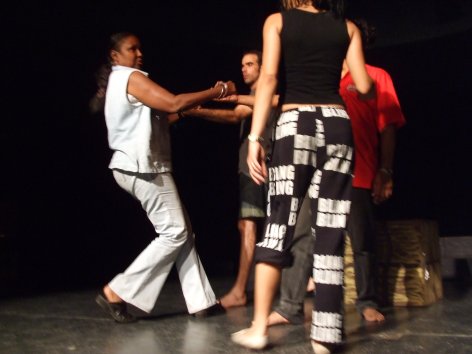
In this interview I’ve been able to reflect barely a part of the career of Luz Maria Collazo as a model and dancer. As for her involvement in theater, I’ll only mention “Yerma” and “La canción de Rachel,” directed by Roberto Blanco; and “La piedra de Elliot” and “La Celestina,” with the Rita Montaner company.
On the night of January 6, 2010, there took place in the La Maison house of fashions a show in which many retired models of different generations participated. Luz Maria Collazo was one of the models who could have participated in the event, but she decided not to. Instead she observed from the audience.
At the end of the show, the host mentioned a group of models who had worked at La Maison, but they failed to cite the name Luz Maria Collazo.
It’s difficult to know whether this was due to disorganization or simple ignorance.
The public left without knowing that among them was someone who could be considered Cuba’s first black model, in addition to being the face for the film “Soy Cuba,” a soloist with Danza Contemporánea —which was the very founder of La Maison— and even a teacher of models. That’s why it’s necessary that we refresh our memories every so often, so that the work of those who preceded us doesn’t pass into oblivion.
Click on the tumbnails below to view all the photos in this gallery

























Wow! This is a great article. I can never stop watching her in Soy Cuba. She was incredible. Thank you for seeking and finding her.
Hi
I was wondering if anyone knew how to go about being a male model in cuba, if the person is cuban and lives in cuba?
As a person who is also African Cuban it is no surprise that many Cubans in our country are not known to other Cubans living in Cuba..i am pleased however to know that she has been uncovered..Good article.
Gracias por el artidulo, la entrevista esta muy bien realizada, quien lea estas paginas debe de interesarse por conocer a esta artista, que ha puesto a Cuba siempre tan alto, en todos los niveles, del arte y de la danza, espero volverla a ver algun día personalmente, e invitarla a tomarse una copa, y contar unos cuentos de las viejas historias, y nos diga sus nuevos proyectos.
Gracias por existir, seguid adelante, y no os demayeis, nunca…… (desde España, Carlos Ramón).
Gracias por el artidulo, la entrevista esta muy bien realizada, quien lea estas paginas debe de interesarse por conocer a esta artista, que ha puesto a Cuba siempre tan alto, en todos los niveles, del arte y de la danza, espero volverla a ver algun día personalmente, e invitarla a tomarse una copa, y contar unos cuentos de las viejas historias, y nos diga sus nuevos proyectos.
Gracias por existir, seguid adelante, y no os demayeis, nunca…… (desde España, Carlos Ramón).
Thank you relating Luz Maria’s wonderful story! Viewing the story’s first foto, even before I read the article, I recognized her from that unforgettabley haunting scene in ” Yo Soy Cuba.” I am now happy to know something about the rest of her life. She is a truly fascinating, multi-talented artist.